Reviews
Taylor Hackford
USA, 1997
Credits
Review by Stephen Snart
Posted on 22 October 2009
Source Warner Bros. DVD
Categories 31 Days of Horror VI
Viewing The Devil’s Advocate requires us to confront the generic expectations we instill upon the modern horror film. It’s a full 58 minutes before the film’s first “scare” and it’s not until the two-hour mark that the film fully delivers the expected imagery and style of the horror film. But that’s because this two hour, twenty-four minute film is also concerned with being an elaborate legal thriller and an allegorical tale about the seductive draw of money. A big budget, leisurely pacing, diverse cast, innumerable references to literature and the fine arts—they sure don’t make ‘em like this anymore.
Keanu Reeves stars as Kevin Lomax, a successful defense lawyer in Gainesville, Florida. He’s garnered a lot of attention for his undefeated winning streak, so much so that a major New York law firm entitled Milton Chadwick & Jenkins recruits him to help pick juries. Lured by the bright lights and abundant wealth, Kevin and his wife, Mary Ann, quickly settle into a voluptuary lifestyle in a resplendent co-op. The head of the firm, John Milton, takes a shine to Kevin and under his tutelage Kevin makes partner in record time. But of course, there’s a catch. As the title suggests, Milton turns out to be the Devil—and not just metaphorically in the sense that all lawyers are evil, but rather the Devil incarnate.
The twist is heavily foreshadowed in the imagery and the dialogue (Milton even says “Speak of the Devil” at one point) and the promotional material made no effort to hide his identity but the film itself does not explicitly divulge the information until the final half hour. That’s partly due to the film’s dedication to simultaneously appear as an engrossing legal thriller. Throughout the course of the film, we see Kevin try three cases in great depth: a school teacher accused of pedophilia, a health code violation involving the religious slaying of a goat, and a triple homicide perpetrated by the largest real estate developer in Manhattan. Clearly influenced by the mega success of John Grisham novels and film adaptations in the mid-90s, the legal proceedings are not entirely convincing but they provide an important framework for the film’s climax: a dialogue-driven showdown between Milton and Kevin in which philosophical musings stand between freewill and the fate of humanity.
The final half hour - while not a verbal chess match - does raise some complex philosophical questions delivered by Al Pacino in one of his most effective angry-man routines. Pacino’s overacting has become a risible burden in recent films like Two for the Money and The Recruit but his arched eyebrows, wildly elevating octaves, and frantic movements are perfectly suited for his role here. These final twenty minutes are when the film paradoxically falls apart and comes into its own. It is hard to ignore the drastic tonal shift as it reneges on much of the emotional realism established before it, but it delivers the film’s most substantial content, both aesthetically and philosophically. The visuals of Milton’s sky loft inferno are suitably over-the-top, garnished with an unforgettable marble mural that comes to life. The dialogue is similarly exaggerated yet also self-aware:
Kevin:
You want a child?
Milton:
I want a family.
Kevin:
The Anti-Christ?
Milton:
(chuckles) Whatever.
Also included in the sequence are some intense discussions about vanity, faith, success and independence. As well as some scintillating dialogue that begs to be quoted: “Love? Biochemically no different than eating large quantities of chocolate.” (In reference to God): “He’s an absentee landlord!”
With a final twenty minutes involving such explicitly demonic content, it’s hard to argue against The Devil’s Advocate being considered anything but a horror film. But during the preceding running time, it’s also hard to argue in its favor. The modern assumption of the horror genre is that it needs to produce a steady stream of scares. Of course, if we think back to classic horror films like Psycho, The Wicker Man and Rosemary’s Baby, it’s perfectly acceptable to casually establish setting and atmosphere before introducing the horror elements. But over the past decade, it’s hard to find a horror film where the screeching sound effects, ominous music, fast cuts and violent imagery aren’t prevalent from the first scene. In our post-Scream society it’s hard to find a horror film with even fifteen minutes of atmospheric preamble. Released in 1997 with a $57 million budget (although it looks like it cost twice as much), The Devil’s Advocate harks back to a time when horror films could achieve their tension through slow boil rather than in brief spurts. While fairly traditional in its construct, the content is still quite progressive—particularly the lewd dialogue, copious nudity and the gleeful relish of sacrilege.
The Devil’s Advocate isn’t as evenly paced as the classic horror titles mentioned above but it does strive to be more than a special effects extravaganza. While the film occasionally succumbs to overwrought melodrama and the sheer lunacy of its proposition (like in Angel Heart, the Devil sure seems to do a lot of micro-managing), it’s hard to begrudge the film’s questionable moments given the strong production value and talented crew. From the unsettling score by James Newton Howard to the special effects designed by Rick Baker to the cinematography by Andrzej Bartkowiak to the screenplay co-written by Tony Gilroy and not to mention the direction by Oscar-nominee Taylor Hackford—the crew honors quite the pedigree.
The film is also notable for its use of Manhattan geography, particularly in its depiction of the stomping grounds of the upper-crust. Even though some filming was done in LA, The Devil’s Advocate has an intimate sense of location (including the subway system!) and deserves inclusion in Manhattan-on-film discussions. There’s an evident respect for architecture on display—particularly the immensity of the skyscrapers as height is a recurring motif. And in a further commitment to location, the film features cameos by real-life New York politicians Alfonse D’Amato and Charles Gargano.
Keanu Reeves’ performance is one of the weaker elements. Although Reeves was given some strong reviews at the time , his performance has not aged well. Sporting a Southern drawl of the same vintage and caliber as Nicolas Cage’s in Con Air, Reeves often comes off as doing a weak impression of the cocky Tom Cruise archetype. Charlize Theron, as Mary Ann, gives what could be described as a very young performance, although she does accomplish a believable transition from flirtatious sexpot to dowdy housewife. Fortunately they receive excellent support from an inspired supporting cast which includes Craig T. Nelson, Heather Matarazzo, Jeffrey Jones and Delroy Lindo.
The coda - which returns to the film's opening scene and allows Kevin to follow a path of virtue instead of greed - is also a point of fierce contention for many viewers. It's drawn some criticism for weakening the impact of the climax and for trivializing the movie as a whole. Understandable, although fortunately no one utters "it was just a bad dream." While it is somewhat hokey, I actually think it's a good ending. For one, it satisfies generic expectation as it employs a very traditional - even cliché - horror film technique. It also contextualizes the extreme imagery and fantastical nature while rounding out the film's positioning as morality tale. But even more importantly it allows for The Rolling Stones "Paint it Black" over the end credits and a delicious final punch line: the Devil is also a journalist.
More 31 Days of Horror VI
-

From Beyond
1986 -
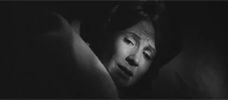
The Haunting
1963 -
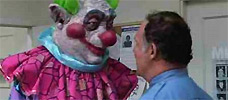
Killer Klowns from Outer Space
1988 -

Shock ‘Em Dead
1991 -

Critters
1986 -

Critters 2
1988 -

The Fall of the House of Usher
1928 -

Jonestown: The Life and Death of Peoples Temple
2006 -

In the Mouth of Madness
1994 -

Winterbeast
1991 -

Black Roses
1988 -

Needful Things
1993 -
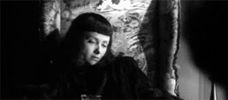
The Seventh Victim
1943 -
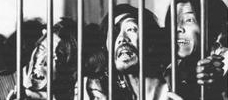
A Page of Madness
1926 -

Holocaust 2000
1977 -
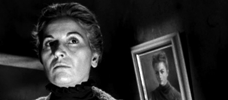
The Man and the Monster
1958 -

The Texas Chainsaw Massacre 2
1986 -

Trick or Treat
1986 -

Single White Female
1992 -

Trouble Every Day
2001 -
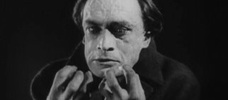
The Hands of Orlac
1924 -

The Devil’s Advocate
1997 -

Nocturne
1998 -

Hardware
1990 -

Hard Rock Zombies
1985 -

The Slumber Party Massacre
1982 -

Saw VI
2009 -
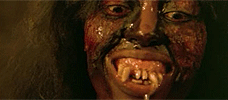
Zombi 4: After Death
1988 -
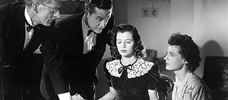
The Uninvited
1944 -

Hausu
1977
We don’t do comments anymore, but you may contact us here or find us on Twitter or Facebook.



